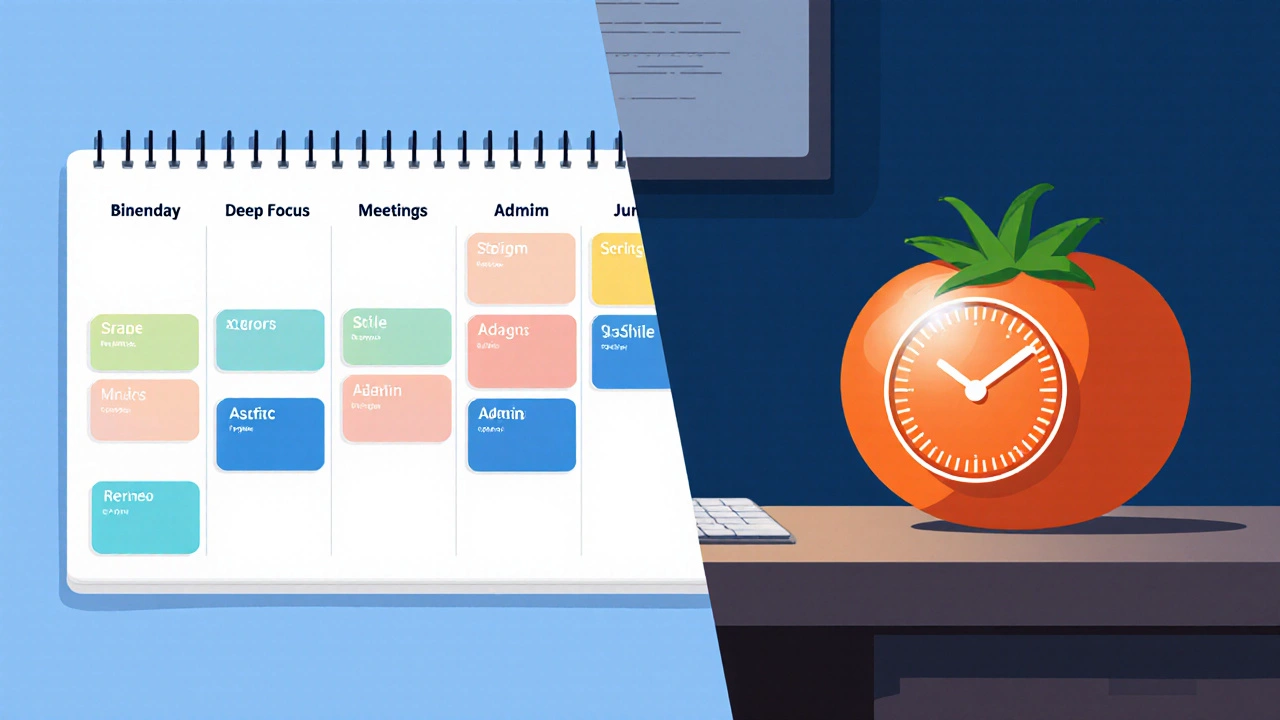Work-Life Balance Calculator
Assess Your Balance
Personalized Recommendations
Finding a work-life balance that actually works for you is a challenge many face today. Work-life balance is a state where professional duties and personal life coexist without one overwhelming the other. If you feel constantly drained, miss family events, or see your health slipping, you’re probably out of sync. This guide walks you through practical steps, real‑world examples, and a handy checklist so you can bring harmony back to your day.
Key Takeaways
- Do a quick self‑audit to spot the biggest imbalance drivers.
- Set firm, communicated boundaries for work hours and personal time.
- Apply a time‑management method that matches your rhythm.
- Negotiate flexible or remote options whenever possible.
- Protect your wellbeing with regular breaks, movement, and sleep.
1. Diagnose Your Current Balance
Before you can fix anything, you need a clear picture of where you stand. Grab a notebook and answer these questions for the past week:
- How many hours did you actually spend on work tasks?
- How many hours were spent on family, hobbies, or rest?
- When did you feel most stressed or exhausted?
- Did you skip meals, workouts, or sleep to finish a project?
The answers reveal patterns-perhaps you’re pulling late nights three times a week, or you never unplug on weekends. Knowing the hot spots lets you target the right fixes.
2. Create and Guard Clear Boundaries
Boundaries are explicit limits you set between work responsibilities and personal space. Communicate them to teammates, managers, and family members. Example scripts:
- "I’ll answer emails until 6pm, then I’m offline for family time."
- "If a project needs extra hours, I’ll schedule them on a Saturday, not weekdays."
Stick to the schedule. If a colleague pushes a late meeting, politely suggest an alternative or ask if it can be handled asynchronously. The consistency trains both you and others to respect the line you’ve drawn.
3. Master Time Management That Fits You
Different methods work for different personalities. Two popular frameworks are:
- Time blocking: Reserve chunks of the calendar for specific types of work (deep focus, meetings, admin). The visual layout reduces task‑switching fatigue.
- Pomodoro: Work 25 minutes, break 5; after four cycles, take a longer 15‑minute break. It’s great for maintaining concentration without burning out.
Pick one, test it for two weeks, and tweak the length of blocks or pomodoros until you feel a natural flow. The goal is to create predictable windows for focused output and built‑in recovery.

4. Leverage Flexible and Remote Work Options
Remote work allows you to perform job duties outside the traditional office setting, while Flexible schedule lets you shift start‑end times to match personal peak energy periods. If your employer offers these, approach the conversation with data:
- Show how flexibility increased your output in a pilot month.
- Propose a trial period (e.g., one month of 3‑day office, 2‑day remote).
When approved, set up a dedicated workspace at home, keep a clear start‑end routine, and treat remote days as if they were office days-just without the commute. The saved travel time becomes a buffer for exercise, meals, or family.
5. Prioritize Well‑Being and Burnout Prevention
Burnout is a state of chronic physical and emotional exhaustion caused by prolonged stress and overwork. Early signs include irritability, sleeplessness, and a decline in work quality. Counteract it with three pillars:
- Movement: A 10‑minute walk or stretch break every 90 minutes resets circulation and mental clarity.
- Nutrition: Keep a balanced snack (protein + complex carbs) at your desk to avoid sugar crashes.
- Sleep hygiene: Aim for 7‑8 hours, dim lights an hour before bed, and avoid screens after 10pm.
Schedule these activities like any meeting-write them into your calendar and protect the slots.
6. Build Supportive Daily Habits
Habits are the glue that holds your balance plan together. Try the following routine:
- Morning: 5‑minute gratitude journal, then outline top three work goals.
- Midday: Lunch away from your desk, followed by a 5‑minute stretch.
- Evening: Shut down devices at a set hour, then spend 30 minutes on a hobby or family activity.
Consistency is key. By automating the start‑stop cues, you reduce decision fatigue and reinforce the boundaries you set.

7. Compare Popular Balance Strategies
| Strategy | Core Principle | Best For | Typical Commitment |
|---|---|---|---|
| Time Blocking | Allocate fixed calendar blocks for specific work types | People who thrive on routine and visual planning | 30‑60minutes to set up weekly |
| Flexible Hours | Shift start/end times to align with personal energy peaks | Those with variable family or health needs | Negotiation with manager; ongoing adjustment |
| Digital Detox | Remove non‑essential screen time outside work hours | Anyone feeling constant notification overload | 1‑2hours nightly, plus weekend tech‑free windows |
8. Quick Daily Checklist
- ☐ Review tomorrow’s time blocks before bedtime.
- ☐ Set a “work‑off” alarm for the end of the day.
- ☐ Take a 5‑minute movement break every 90 minutes.
- ☐ Log one gratitude note or personal win.
- ☐ Disconnect from non‑essential devices 30 minutes before sleep.
Frequently Asked Questions
How often should I reevaluate my work‑life balance plan?
A brief review every month works for most people. Look at stress levels, missed personal events, and productivity metrics. If anything feels off, tweak one element (e.g., adjust block lengths or renegotiate flex hours) before the next cycle.
Can I practice these steps if I’m a freelancer with irregular hours?
Absolutely. Freelancers often have more control over their schedule, so time blocking and setting boundaries become even more critical. Treat client calls as “meetings” in your calendar and schedule personal time as non‑negotiable blocks.
What if my manager resists a flexible schedule?
Start with a data‑driven proposal. Show how flexible hours improved your output in a pilot week. Offer a trial period and outline clear deliverables. If resistance remains, look for internal allies or explore roles that already embrace flexibility.
How do I handle weekend work requests without breaking balance?
Set a rule: weekend work only for true emergencies. Communicate this policy to your team and suggest alternatives like moving the task to Monday. If you must work, limit it to a short, defined window and compensate with extra personal time later.
Is it realistic to expect perfect balance every day?
Perfect balance every single day is rare. The aim is a sustainable rhythm where high‑intensity weeks are offset by lighter ones. Think of balance as a long‑term average, not a daily scorecard.










